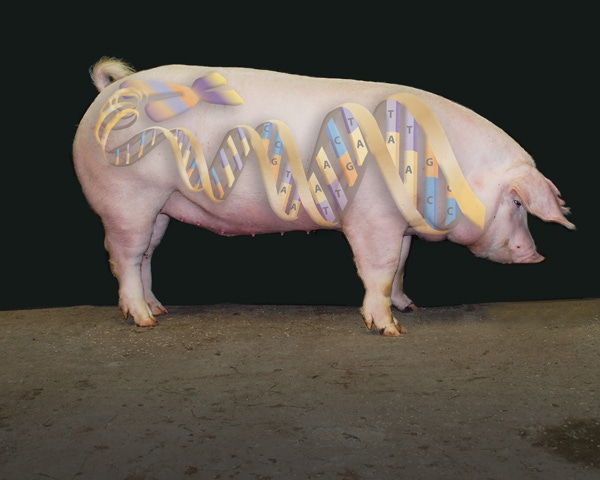An Iowa State University researcher has identified genes that may one day enable pork producers to select pigs with reduced shedding and/or susceptibility to salmonella infection. Genetic markers can be used to select animals that shed fewer salmonella organisms and are less likely to cause contamination across pens and in the holding pens at the slaughter facility.
December 15, 2012

An Iowa State University researcher has identified genes that may one day enable pork producers to select pigs with reduced shedding and/or susceptibility to salmonella infection.
Genetic markers can be used to select animals that shed fewer salmonella organisms and are less likely to cause contamination across pens and in the holding pens at the slaughter facility, says Christopher Tuggle.
The goal of this project was to directly improve pork safety as well as decrease other on-farm contamination by fecal material used as fertilizer.
In order to achieve the long-term goals, Tuggle pursued four specific objectives:
1. Generate a large bank of salmonella fecal shedding data and match DNA samples from U.S. pigs;
2. Create DNA tests for genetic variation at candidate genes;
3. Perform genotyping using DNA tests of salmonella-positive pigs; and
4. Compare test genotypes with salmonella incidence and epidemiology and genomics projects to understand salmonella contamination.
For the first objective, 462 belly flap tissue samples were collected, which included 163 pigs that shed salmonella in their feces seven days prior to marketing, along with 299 negative control pigs collected at the same time as a positive sample. DNA was prepared from positive and negative samples and used for genotyping.
The second objective involved collection of candidate genes for analysis of genetic variation for salmonella infection.
In the third objective, researchers selected and genotyped across the four populations 62 single nucleotide polymorphisms (SNPs) in 53 genes that are involved in the pig’s response to salmonella infection and confirmed 28 SNPs in at least two populations.
A newly applied statistical approach to salmonella shedding/tissue colonization levels was applied for the fourth objective following the three-week period post-infection.
Statistical analysis yielded several SNPs that are associated with salmonella shedding or tissue colonization in pigs.
The genotyping and statistical analysis data identified genetic markers that are potentially useful for selecting animals that shed fewer bacteria and are less likely to cause penmates to harbor salmonella infection on a farm and at the slaughter plant.
The work has been peer-reviewed and published in two scholarly journals, Animal Genetics and the Journal of Animal Breeding and Genetics. The project was funded by the National Pork Board.
Researcher: Christopher Tuggle, Iowa State University. For more information, contact Tuggle by phone (515) 294-4252, fax (515) 294-2401 or e-mail [email protected].
You May Also Like



